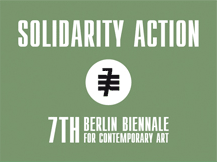Art is anything but democratic (fortunately), so it is hard to understand how it could nurture democratic processes. Art, instead, or more precisely certain protagonists of the art world, should and could take part in the debate, presenting their opinion with greater decision and resolve.
There are a number of reasons why museums spend a large part of their budgets on maintenance costs. The first reason is that the budgets are small. The second is that the museums are often housed (think about the Macro or the MAXXI in Rome) in spaces conceived prior to the great crisis, when the world was different. If these museums were designed today perhaps certain excesses of starchitects would be set aside without too much hesitation. Alternative financing to improve the situation of museums? It can only come from private sources, and for that it would be necessary to completely change the situation of taxation in this sector. This would also be good because, speaking of independence, the fewer private players (or big companies) involved, the greater is their power over cultural choices. The rules on taxation, the regulations and standards that are almost completely lacking, are elements that unless they are modernized cause the role of the artist to be precarious and subordinated (today artists have practically no legal status at all). Artists, curators, critics, gallerists are components of the cultural offerings of a city, and they help generate urban quality. They are what American sociologist Richard Florida calls the “creative class”: their presence or absence has a positive or negative impact on civic and civil development. And economic growth as well. These are the actors of a market, with great responsibilities, and this is why more up-to-date regulation is needed.
In this country many cultural institutions are going through a crisis, and run the risk of closing. There are many reasons for this. One of them, which never appears in the widespread debate, has to do with the quantity of these institutions. The cultural institutions are small, fragile, and often hard to defend when it comes to the quality of the final product. In many sectors there are definitely too many of these institutions. This is why they are always at risk. Of course, before giving up the protagonists of the art world should try to establish a more productive dialogue with politics. In Rome, in particular, attempts have been made to create committees (or similar entities) recently, also achieving some results. Actually the city has had the good fortune, in the last three or four years, of offering the sector political counterparts of above-average quality. I am talking about the present city government, though not necessarily the elected officials. In the latter case we have to come to grips with the unpresentable character of the City Council, and there dialogue truly is not plausible, unfortunately: the City Council is not there to promote the interests of the city. A city that, instead, should be trying to construct an international role with large, centralized, not federal institutions, that can grow in terms of authority, recognizability, recognition.
The municipal level can hardly function thanks to public initiatives, there have to be private actors involved, companies, individuals, while public policies have to establish fixed guidelines. One of the main points on the agenda should be to return to being a city where not only does art continue to be shown (in spaces made obsolete by events, as we have seen), but also to be produced. The capacity to offer wellbeing to our artists, to not exclude them but to engage them, and the capacity to attract artists from abroad, depend on this. The challenge has to be this one, in the next few years.
MASSIMILIANO TONELLI
Director and founder of www.arttribune.com. Lives and works in Rome.


